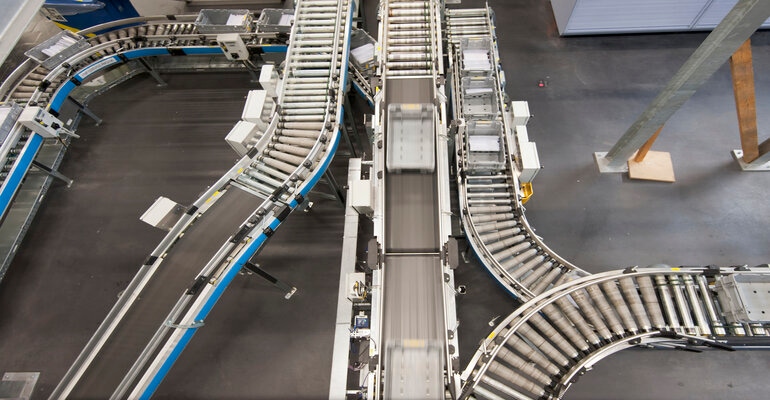Growth Expected Despite Challenges in Contract Manufacturing
2023 looks promising for the CMDO industry after a 2022 filled with supply chain issues, inflation, and personnel shortages.

The United States medical device contract development and manufacturing organization (CDMO) industry is expected to grow more than 13% in 2023, outperforming the medical device market’s 6.1% growth estimate, according to the “2023 U.S. MedTech Contract Manufacturing Report,” by global healthcare advisory firm Alira Health in collaboration with the Massachusetts Medical Device Industry Council (MassMEDIC).
The promising industry outlook for this year comes despite a global recession, continued raw material and component shortages, and challenging labor market. While these hurdles will limit the industry’s medium-term growth potential, mergers and acquisitions are among the forces that will fuel overall industry growth, according to the report investigating the latest trends in the US medical device outsourcing industry.
From a demand perspective, 2022 was a slow year, according to report author Carlo Stimamiglio, partner, Transaction Advisory at Alira Health.
“Medical device OEMs grew in the low single digits and that impacted the performance of contract manufacturers, as well, which grew a healthy near 10% last year but still below the long-term growth of 12% to 13%,” he said.
An expected increase from 2022 to 2023 in procedures done in hospitals and healthcare systems should increase demand for medical devices, which will trickle down to improved business for CDMOs, according to Stimamiglio. There are, however, risks that will continue from last year into 2023. For example, the supply chain crises do not appear to be going away anytime soon, given manufacturers continue to cope with high inflation of key business factors, according to the report.
“The competitiveness of the labor market, so availability of human capital [skilled labor] and increasing labor rates are going to continue to erode the profitability and create problems of the sustainability of the cost structure,” Stimamiglio said.
The good news is CDMO profitability will likely persevere.
“One of the reasons we cover this industry is that it is a very vibrant mergers and acquisitions landscape [and while] 2022 was a bad year for M&A across industries, the medical device CMOs were very resilient to the downturn,” he said.
In fact, it was a near-record year for M&A transactions, with the strong activity by financial sponsors and strategic acquirers, which remains strong today.
There is a caveat, according to Stimamiglio.
“We are starting to perceive from market players some concerns regarding the devaluation of medical device CDMOs. So, we can expect if not a contraction at least a plateau of M&A valuations and more selective behavior of acquirers in the M&A market,” he said.
According to the report, midsize CDMOs represent the largest market share as a result of continued consolidation in organic growth. Stimamiglio said he thinks moving forward in 2023 and beyond there will be several layers of M&A activity, including continued consolidation in the smaller macro buckets, secondary buyouts, and continued inorganic growth of middle-sized operators.
Stimamiglio sees these trends going forward:
Cross-border deals, global transactions, and the European and Asian markets will present inorganic growth opportunities. Additionally, there will be more global buyers coming into the US.
There is an increasing importance to integrate sterilization capabilities in traditional CDMOs, especially given expected regulatory changes that will instate some limitations to Ethylene Oxide (Eto) sterilization, the most widely used sterilization technology.
Click here to read more on the innovation of sterilization
Much like 2022, there will be a strong appetite for engineering capabilities — for mid-sized CDMOs to enforce the development ability by partnering with or acquiring design and development firms.
“We continue to be bullish on the CDMO market long term,” said Matthew Boyd, chief commercial officer of Boyd Biomedical, a growth partner for medical device and life sciences companies. “We attribute the growth potential to the convergence of three market drivers — enabling technologies, the pace of technological advancement, and the market shift towards patient centric solutions or personalized care.”
These drivers, according to Boyd, require that OEMs have access to multidisciplinary product development capabilities across a broad range of skills.
“Many of these skills are non-core capabilities for OEMs and their need for strategic product design and commercialization partners will continue to increase,” he said.
Boyd Biomedical continues to see a high volume of new product design and development programs that are growing a few points faster than overall CDMO market projections.
“That said, our outlook is cautious,” Boyd said. “The medical device and life sciences markets significantly invested in capacity expansion and inventories in response to a shift in mindset about supply chain security over the last few years. Excess capacity, high inventory, and a weak economic outlook are three concerning headwinds which we believe will drag down the market in the short term. To mitigate this risk, we are allocating more time to demand planning and supply chain management with our clients and suppliers. These efforts allow for a more resilient supply chain which can adapt to fluctuations and also sustain our long-term growth goals.”
About the Author(s)
You May Also Like

.png?width=300&auto=webp&quality=80&disable=upscale)
